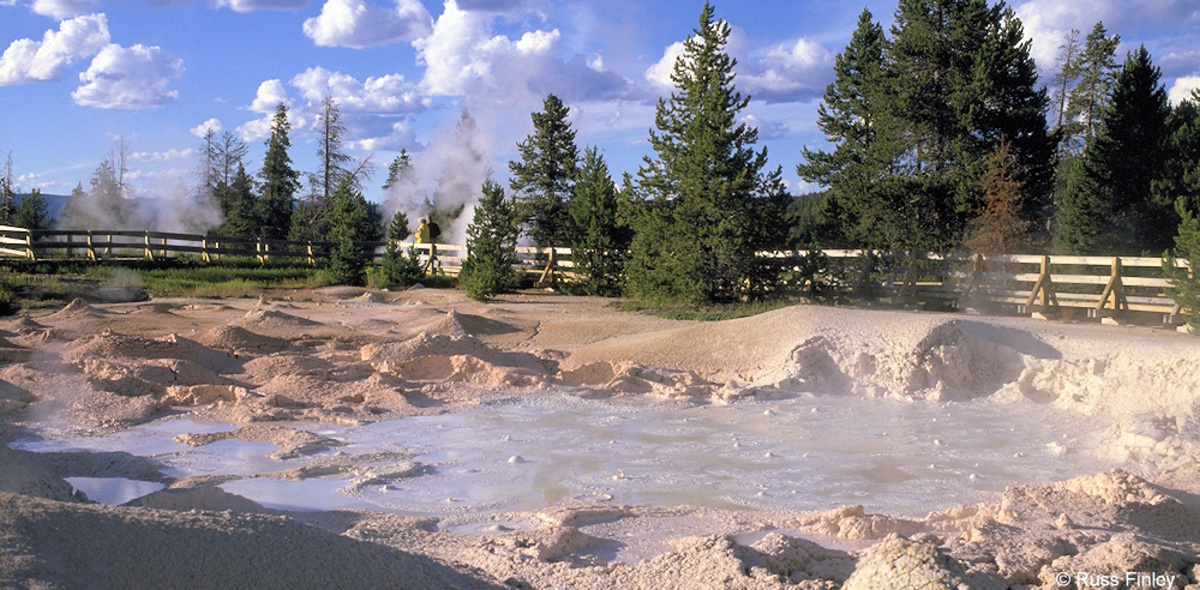9) Lower Geyser Basin / Fountain Paint Pots – The Lower Geyser Basin is scattered over a fairly large area and features regularly-erupting geysers, hot springs, and a fascinating mud pool which often strikes visitors as something from another world.
The Lower Geyser Basin is the largest geyser basin in area, in Yellowstone National Park. It covers approximately 11 square miles. By comparison, the Upper Geyser Basin only covers about one square mile. Because of its large size, the thermal features in the Lower Geyser Basin tend to be clumped in widely spaced groups. The easiest grouping to get to and probably the most interesting to explore is the Fountain Paint Pot area.
Also located in the Lower Geyser Basin is Great Fountain Geyser. Great Fountain is the only predicted geyser in the Lower Geyser Basin and the only predicted geyser in Yellowstone that you can drive to. Predictions for this geyser are posted at the Old Faithful Visitor Center and, when staffing allows, at the geyser.
Fountain Paint Pot Trail
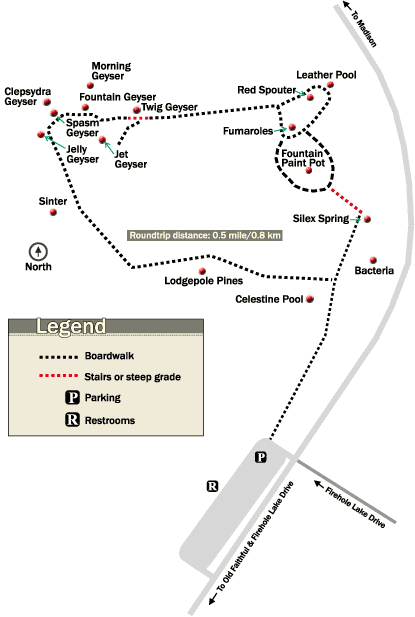
Along this short walk you will see very good examples of most types of thermal features found in Yellowstone. These features include some very pretty hot pools, steaming fumaroles, erupting geysers and probably the best easily accessed mudpots in the park. The area is highly active and at least one geyser is usually erupting here at all times.
It takes about 1/2 hour to get around this area. The parking lot is small and it can be hard to find a parking space but the sights along the trail are well worth the hassle.
Celestine Pool:
Celestine Pool is, tragically, one of the hot springs that has claimed a human life. As in many of the pools around Yellowstone, the water in this pretty pool is usually within a few degrees of boiling. There is little hope of surviving a fall into such a pool.
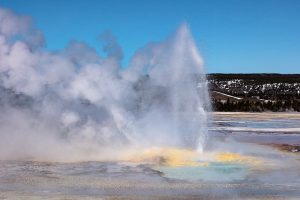
Clepsydra Geyser:
Clepsydra is a pretty geyser often erupting to 45 feet. It was named for a mythical water clock. In the early history of the park, it erupted with clock like regularity. After the 1959 Hebgen Lake Earthquake it went into a “wild phase.” Since then it has erupted almost constantly, only occasionally stopping after an eruption of nearby Fountain Geyser.
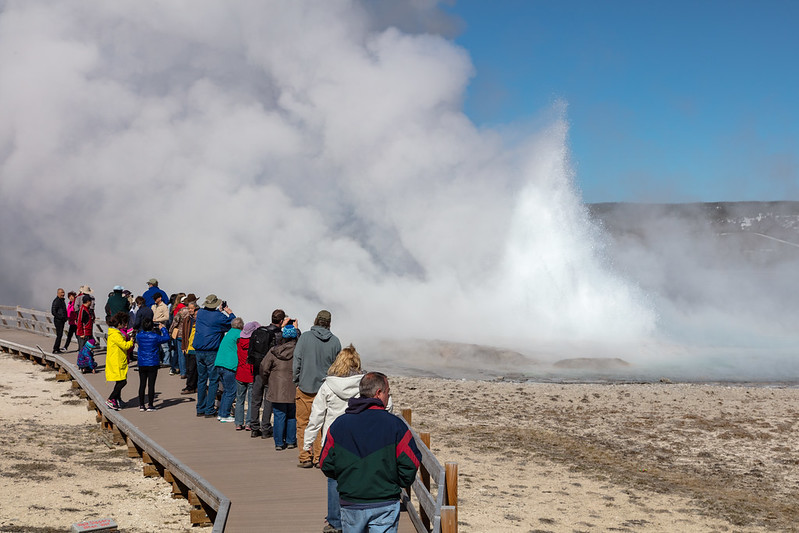
Fountain Geyser:
Fountain is a beautiful geyser. Its 30 minute eruptions can reach over 75 feet and are characterized by highly energetic bursts that wildly explode in all directions. It is a very fun geyser to watch. Since Morning Geyser is usually dormant, Fountain is usually the major performer in the area. It usually erupts every 4 to 15 hours.
Fountain Paint Pots:
The consistency of the Fountain Paint Pots, like all paints pots, is highly affected by recent rain and snow fall. When there is a lot of rain, the paint pots are soupy. As they dry out they become thicker an thicker. The Fountain Paint Pots increased dramatically in size following the 1959 Hebgen Lake earthquake. In fact, a trail and parking lot had to be moved. You can still see some of the old structure along one edge of the paint pots.
Fumaroles:
There are a number of fumaroles, steam vents, located at the higher elevations in the Fountain area. Notice how the hot pools and geysers, the wettest features, are located at the lowest levels. The paint pots are located at an intermediate level and the fumaroles, the driest features, are located at the highest level.
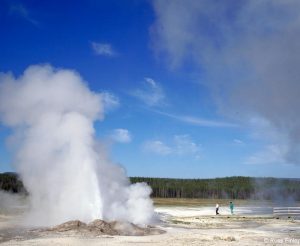
Jet Geyser:
Jet is a frequent performer erupting every 7 to 30 minutes to 20 feet. It erupts from at least five vents in an elongated cone. Jet shows its connection to Fountain Geyser by erupting more frequently during Fountains eruptions.
Leather Pool:
Leather Pool gets its name from the thick brown bacterial mat that is often found in its lukewarm warm waters.
Morning Geyser:
Morning Geyser is the largest geyser in the Fountain area and one of the largest geysers in the world. Unfortunately, it is seldom active. Its last period of activity lasted for one week in 1994. When active it can erupt as often as every 4 hours to 200 feet high and 100 feet wide. Eruptions last up to 1/2 hour.
Red Spouter:
Red Spouter may sometimes look like a small geyser but it is actually a fumarole that sometimes gets drowned by a puddle of water that forms near its vent.
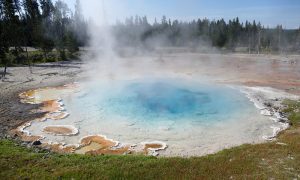
Silex Spring:
Silex Spring is a beautiful blue hot spring. Sometimes, it is possible to see steam jetting into the pool from the vent at the bottom of the pool. This steam quickly collapses as it hits the cooler water of the pool.
Sizzler:
Sizzler is a small geyser of relatively recent origin. Until a few years ago, it erupted from cracks in the sinter. More recently it has started forming a crater. It was interesting to watch the change from what looked like solid ground to a gaping hole. This is one of the dangers of walking off trail in the geyser basins. You never know when a new hole will open up.
Spasm Geyser:
Spasm is a small geyser right next to the boardwalk.
Great Fountain Geyser
Great Fountain Geyser sits in the middle of one of the prettiest sinter formations in the park. The sinter forms a series of terraced concentric reflecting pools around the geyser. Even if the geyser isn’t erupting, it is worth driving past to see the pools.
Great Fountain is a fountain-type geyser, erupting in a series of bursts through a pool of water. Its interval between eruptions ranges from 9 to 15 hours but its short term average interval is usually stable enough that the eruptions can be predicted to within an hour or two. Great Fountain’s maximum height ranges from about 75 feet to over 220 feet. Its duration is usually about one hour but durations of over two hours have been seen.
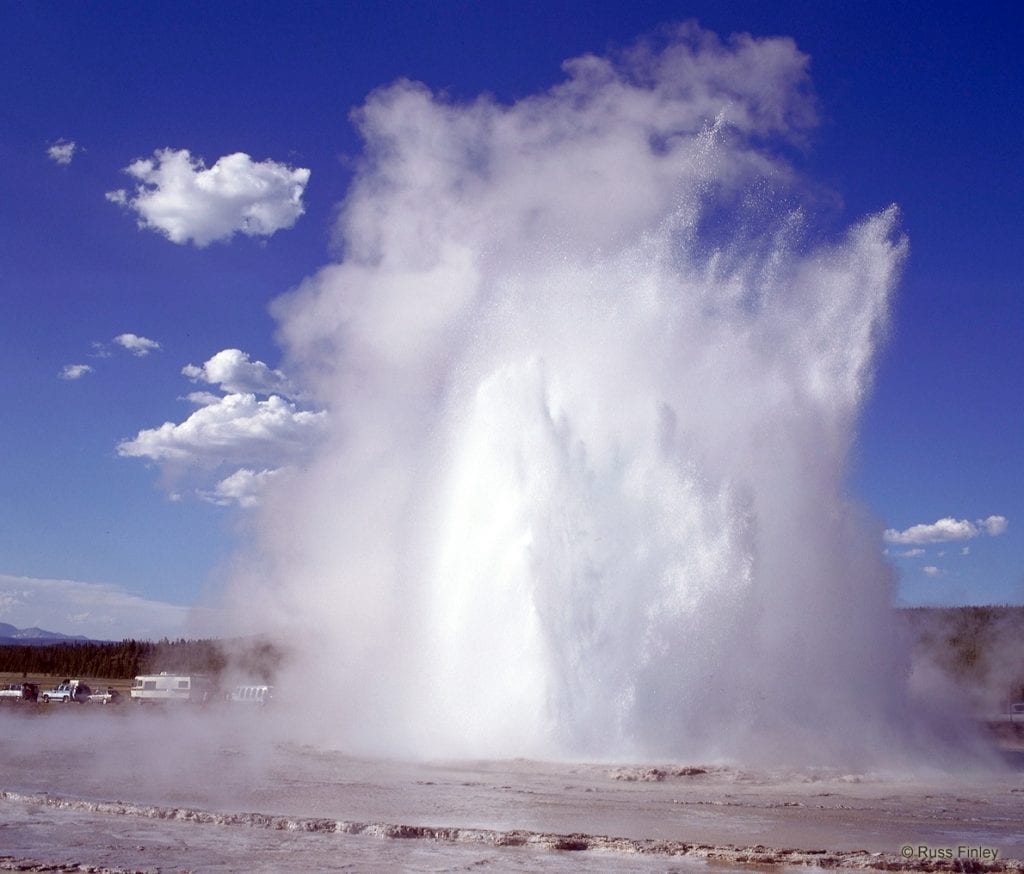
Great Fountain is a major geyser, but many people, when hearing it erupts to over 200 feet, are disappointed by its more common maximum of less than 100 feet. For this reason, Great Fountain has earned a number of pejoratives, such as The Flounder. The smaller eruptions of Great Fountain are still large and pretty but pale in comparison to the truly huge eruptions.
Great Fountain erupts in a series of distinctly spaced bursts. The first group of bursts lasts about ten minutes. Then there is about a five minute quiet period followed by another five or so minutes of activity. These quiet and active episodes continue until the end of the eruption. Usually the first period of activity is the tallest and strongest, with the first and sometimes the second burst being the strongest of the eruption. Sometimes, the largest burst will occur during the third active period. This especially seems to occur when the first period has been uninspiring. Rarely, large bursts will continue long into the eruption.
Great Fountain is the only major geyser you can truly watch from your windshield. This is especially nice in bad weather.
